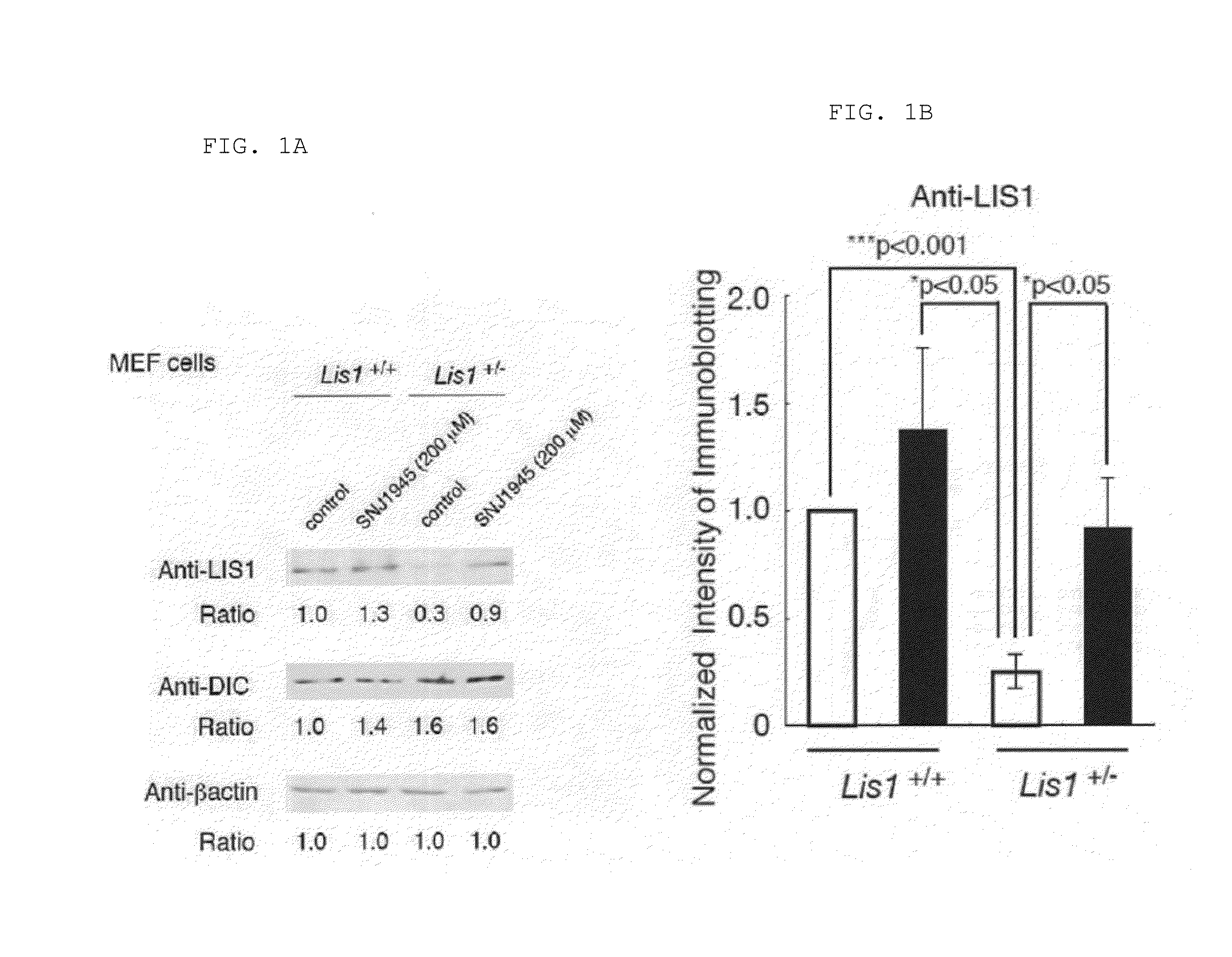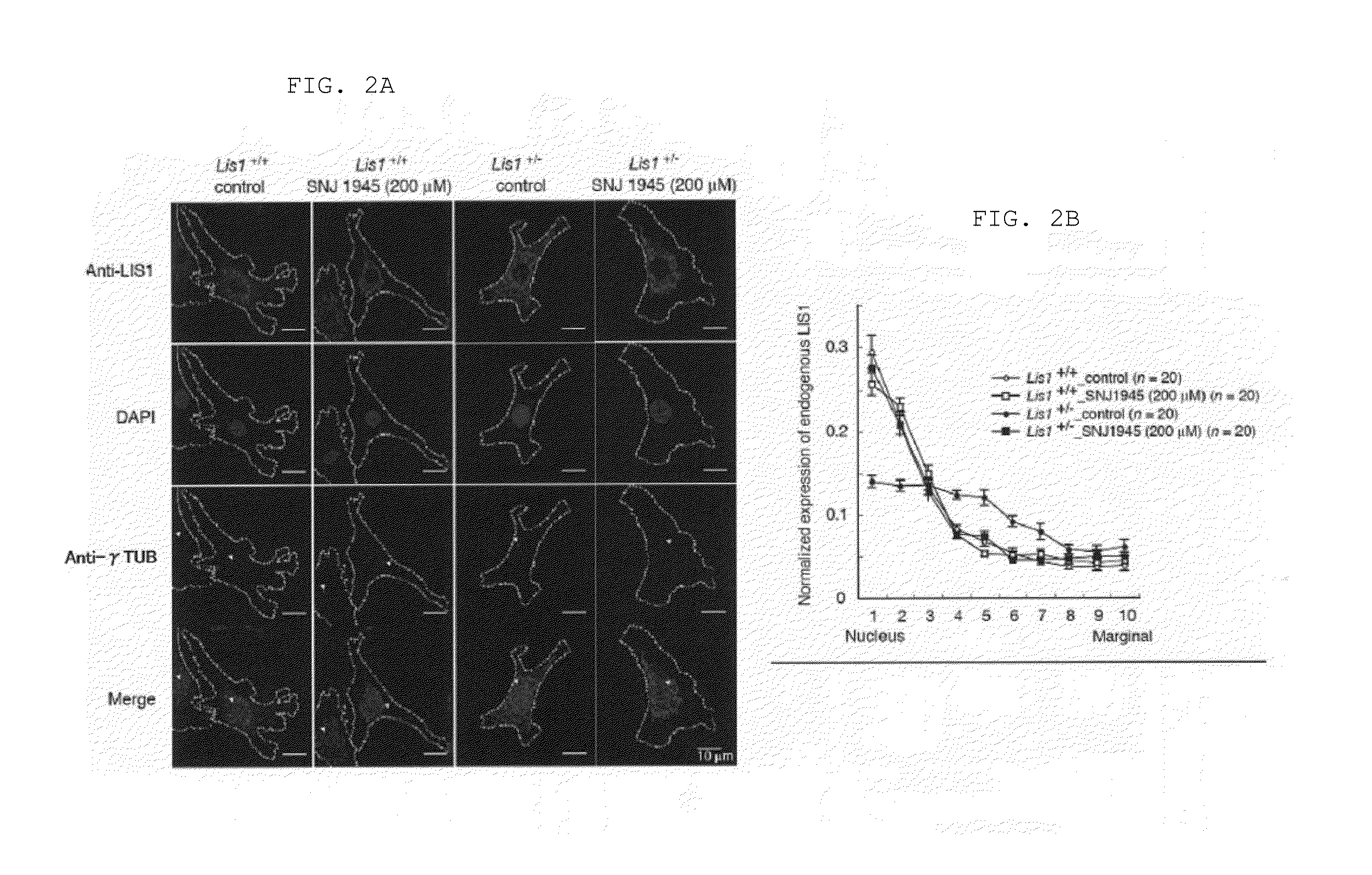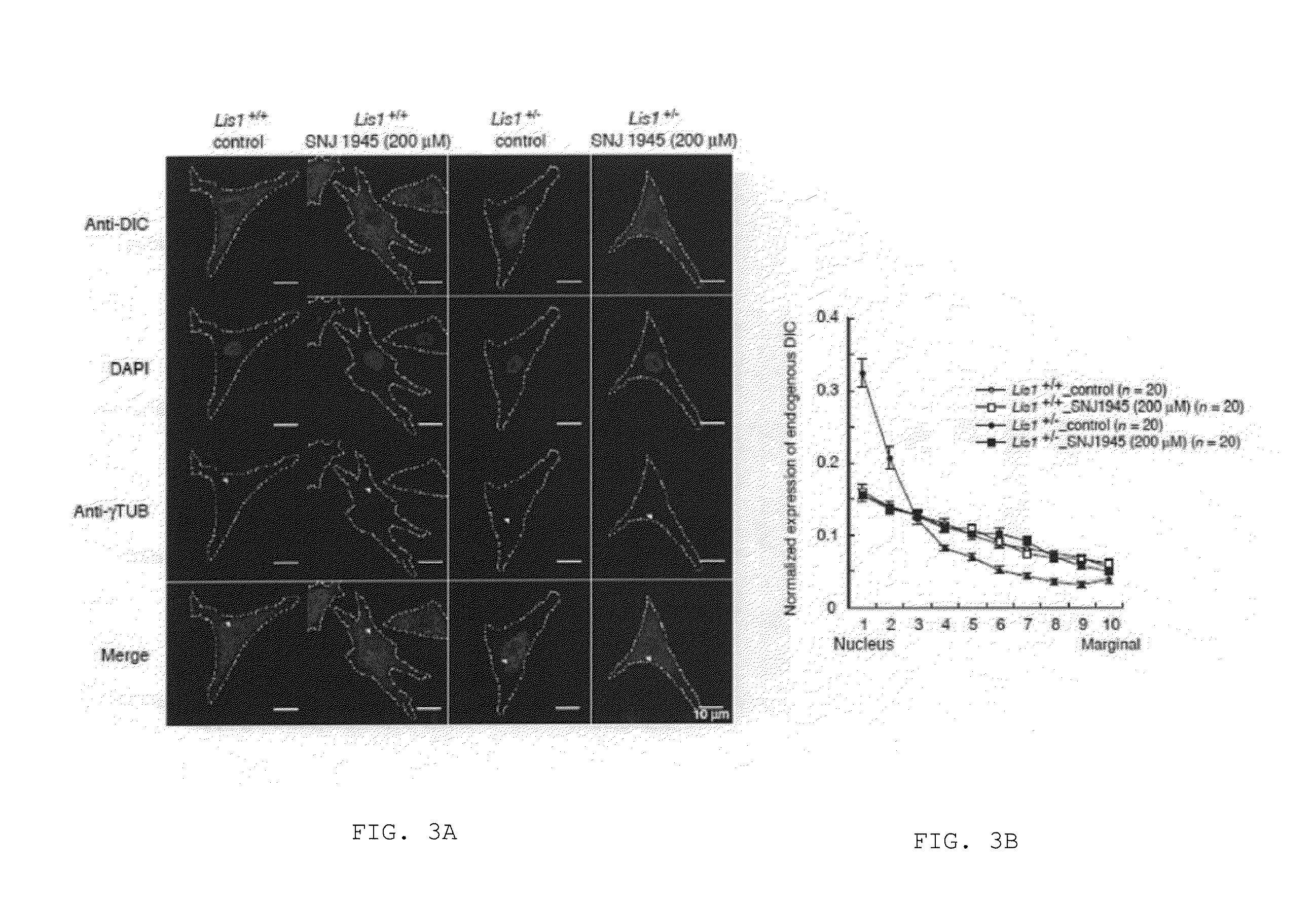Lissencephaly therapeutic agent
a technology for lissencephaly and lissencephaly fetus, applied in the direction of dipeptide ingredients, pharmaceutical delivery mechanisms, organic active ingredients, etc., can solve the problems of abnormal layering of the central nervous system, poor vital prognosis, and difficulty in actual application in clinical practice, so as to prevent the lissencephaly of the patient, improve the symptoms of lissencephaly, and prevent lissencephaly in the
- Summary
- Abstract
- Description
- Claims
- Application Information
AI Technical Summary
Benefits of technology
Problems solved by technology
Method used
Image
Examples
reference example 1
N-((2-Methoxyethoxy)carbonyl)-L-leucine N-hydroxysuccinimide ester
[0147](1) L-Leucine (25 g, 0.19 mol) was dissolved in a 2M aqueous sodium hydroxide solution (0.12 L), to which chloroformic acid 2-methoxyethyl ester (30 g, 0.22 mol) and a 1M aqueous sodium hydroxide solution were simultaneously and slowly added under ice-cold conditions. This solution was stirred at room temperature for 18 hours, followed by dilution with water (600 mL) and washing with diethyl ether (2×200 mL). The aqueous layer was cooled in an ice bath, and the pH was adjusted to 3 with 6M hydrochloric acid. This solution was extracted with ethyl acetate (5×150 mL). The organic layer was dehydrated with anhydrous magnesium sulfate and concentrated in vacuo to yield N-((2-methoxyethoxy)carbonyl)-L-leucine (41 g, 92%) as a colorless oil.
[0148](2) N-((2-Methoxyethoxy)carbonyl)-L-leucine (20 g, 86 mmol) and N-hydroxysuccinimide (13 g, 0.11 mmol) were dissolved in tetrahydrofuran (200 mL), and a suspension of 1-ethyl...
reference example 2
N-(((3S)-Tetrahydrofuran-3-yloxy)carbonyl)-L-leucine N-hydroxysuccinimide ester
[0150](1) N,N′-Disuccinimidyl carbonate (4.3 g, 17 mmol) and triethylamine (4.4 g, 17 mmol, 4.8 mL) were added at room temperature to a solution of (S)-3-hydroxytetrahydrofuran (1.0 g, 11 mmol) in acetonitrile (50 mL) with stirring. This solution was stirred at room temperature for 18 hours, and concentrated in vacuo. A saturated aqueous sodium hydrogen carbonate solution (100 mL) was added to the residue, and the mixture was extracted with ethyl acetate (200 mL). The organic layer was washed with a saturated saline solution, dehydrated with anhydrous magnesium sulfate, and concentrated in vacuo to quantitatively yield N-succinimidyl (3S)-3-tetrahydrofuranyl carbonate (2.6 g) as a brown oil.
[0151](2) A solution of N-succinimidyl (3S)-3-tetrahydrofuranyl carbonate (2.6 g, 11 mmol) in dichloromethane (20 mL) was added to a solution of L-leucine ethyl ester hydrochloride (2.7 g, 14 mmol) and triethylamine (2...
reference example 3
N-((Tetrahydro-4H-pyran-4-yloxy)carbonyl)-L-leucine N-hydroxysuccinimide ester
[0156](1) The reaction was performed as in Reference Example 2 (1) by using 4-hydroxytetrahydro-4H-pyran in place of (S)-3-hydroxytetrahydrofuran, thereby yielding N-Succinimidyl tetrahydro-4H-pyran-4-ylcarbonate as a brown oil.
[0157](2) The reaction was performed as in Reference Example 2 (2) by using N-succinimidyl tetrahydro-4H-pyran-4-ylcarbonate in place of N-succinimidyl (3S)-3-tetrahydrofuranyl carbonate, thereby yielding N-((tetrahydro-4H-pyran-4-yloxy)carbonyl)-L-leucine ethyl ester as a colorless solid.
[0158](3) The reaction was performed as in Reference Example 2 (3) by using N-((tetrahydro-4H-pyran-4-yloxy)carbonyl)-L-leucine ethyl ester in place of N-(((3S)-tetrahydrofuran-3-yloxy)carbonyl)-L-leucine ethyl ester, thereby yielding N-((tetrahydro-4H-pyran-4-yloxy)carbonyl)-L-leucine as a colorless solid.
[0159](4) The reaction was performed as in Reference Example 1 (2) by using N-((tetrahydro-4H...
PUM
| Property | Measurement | Unit |
|---|---|---|
| temperature | aaaaa | aaaaa |
| temperature | aaaaa | aaaaa |
| temperature | aaaaa | aaaaa |
Abstract
Description
Claims
Application Information
 Login to View More
Login to View More - R&D
- Intellectual Property
- Life Sciences
- Materials
- Tech Scout
- Unparalleled Data Quality
- Higher Quality Content
- 60% Fewer Hallucinations
Browse by: Latest US Patents, China's latest patents, Technical Efficacy Thesaurus, Application Domain, Technology Topic, Popular Technical Reports.
© 2025 PatSnap. All rights reserved.Legal|Privacy policy|Modern Slavery Act Transparency Statement|Sitemap|About US| Contact US: help@patsnap.com



